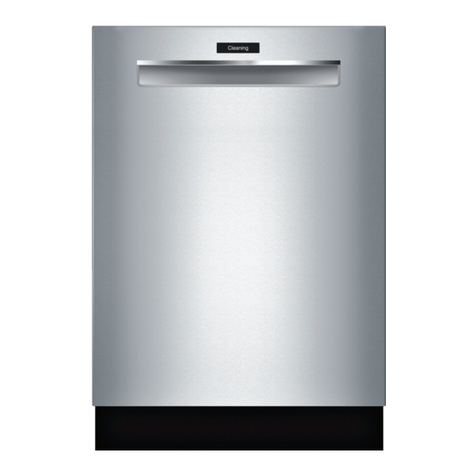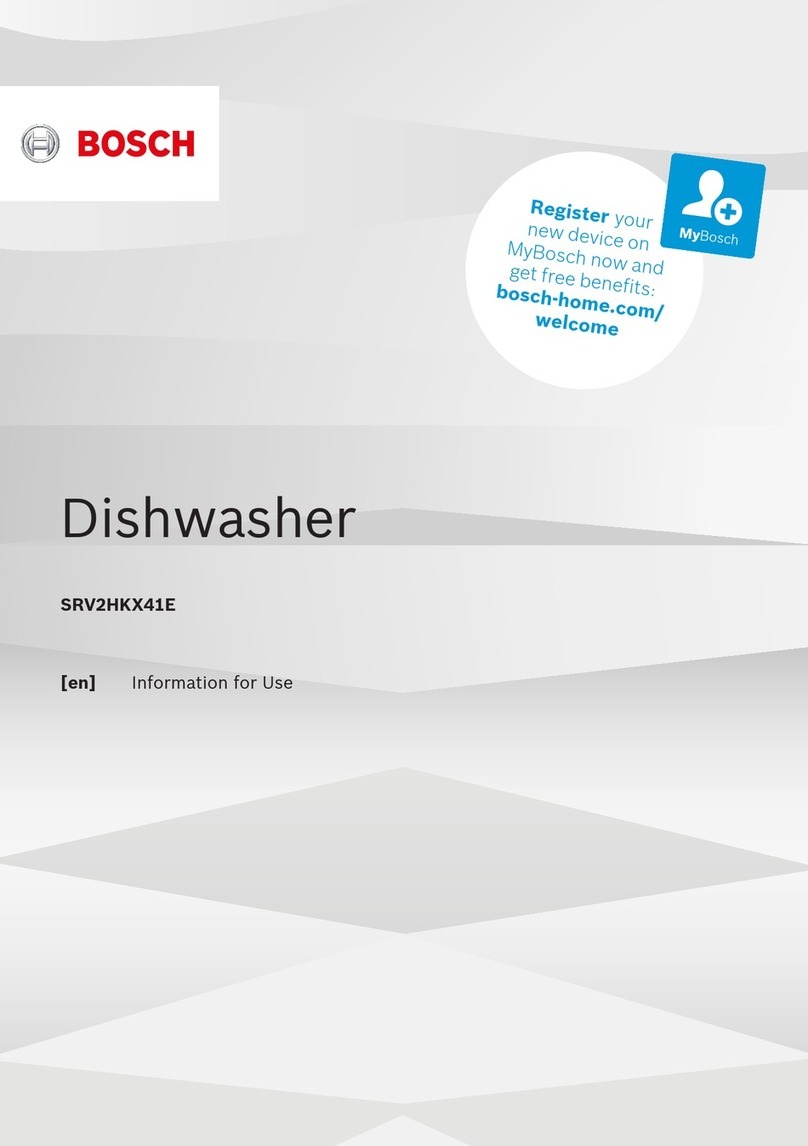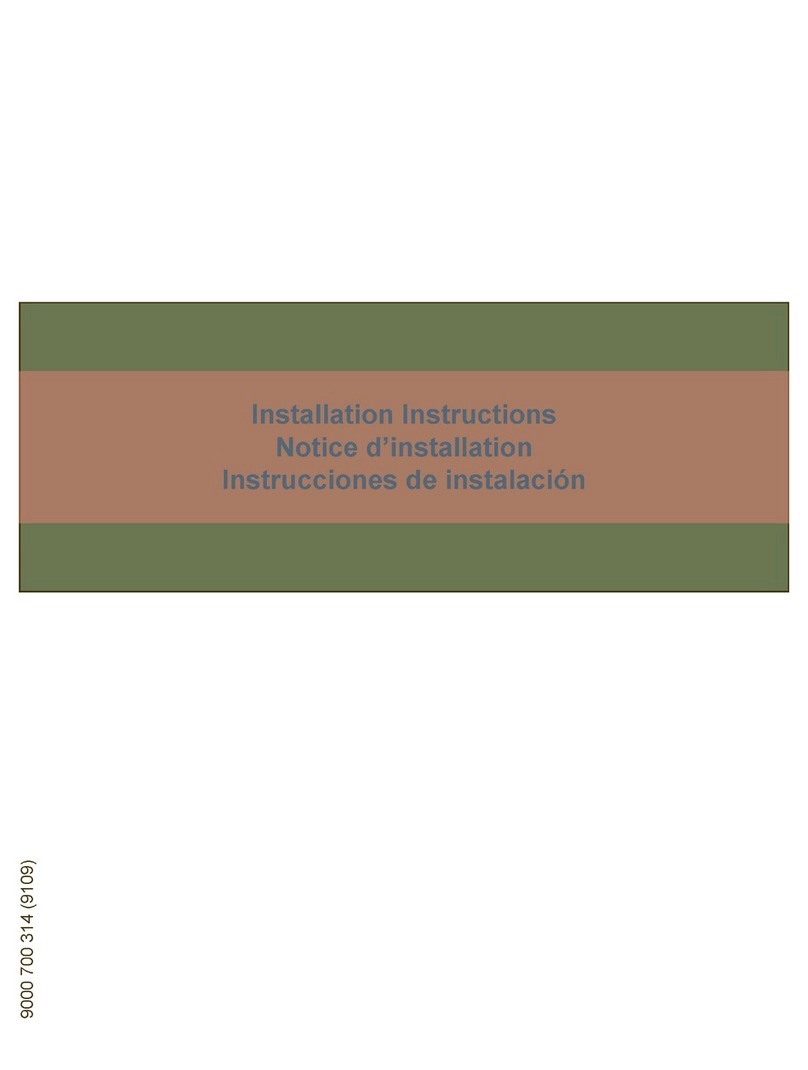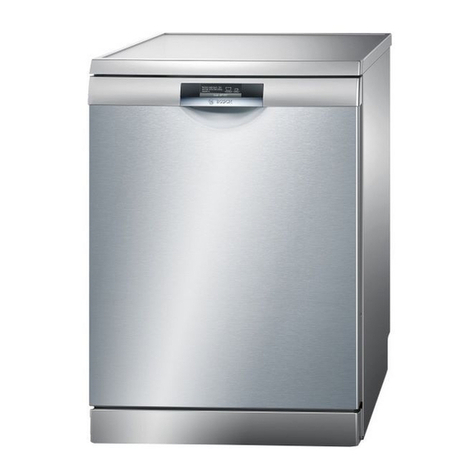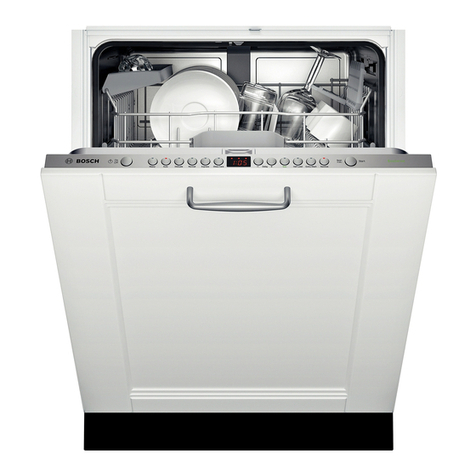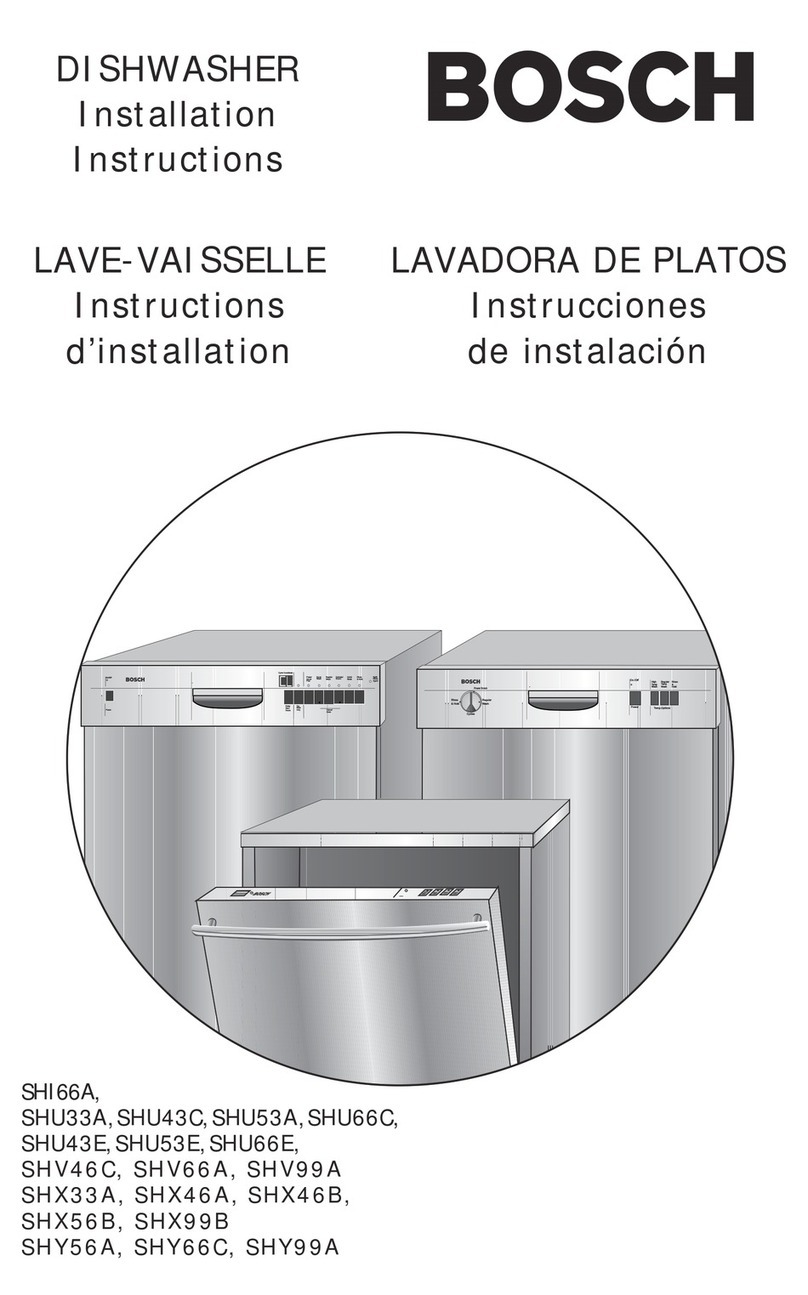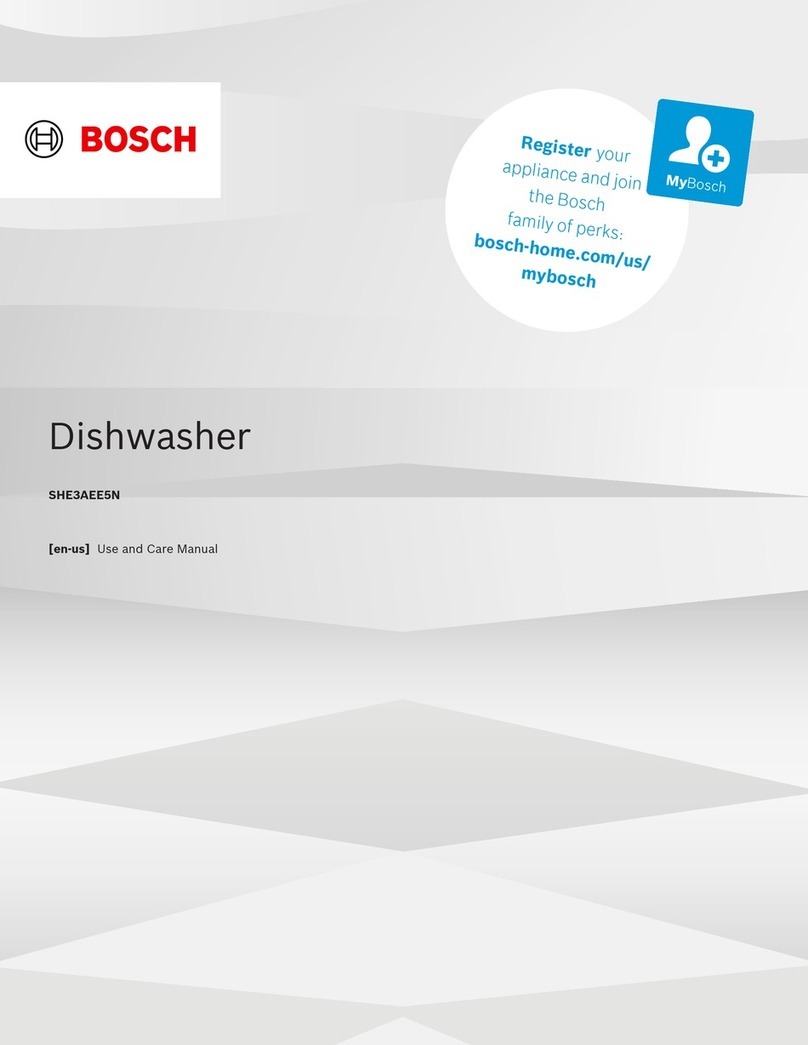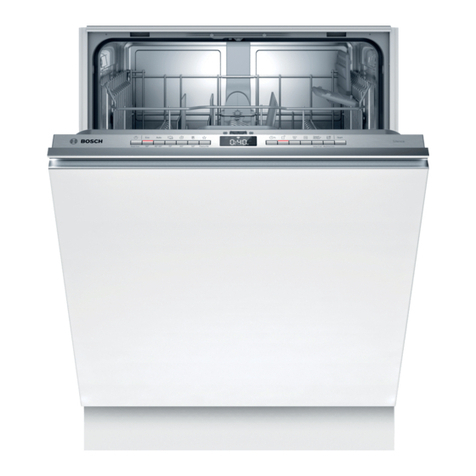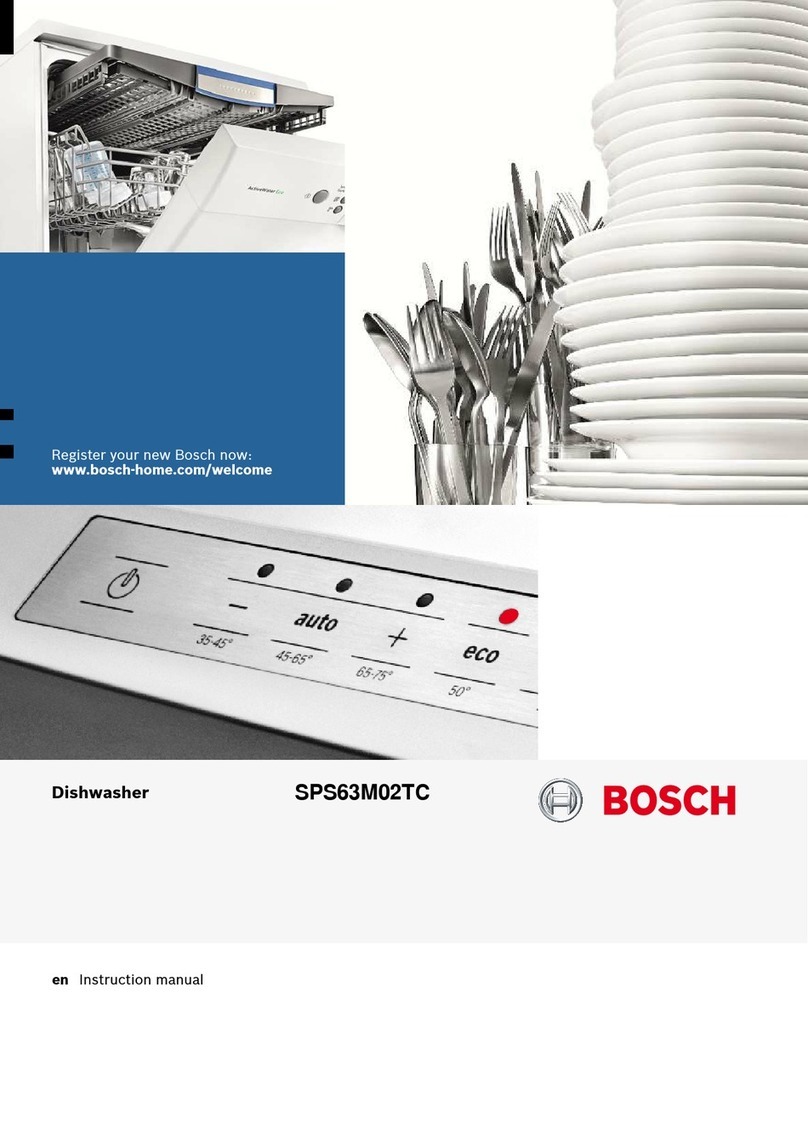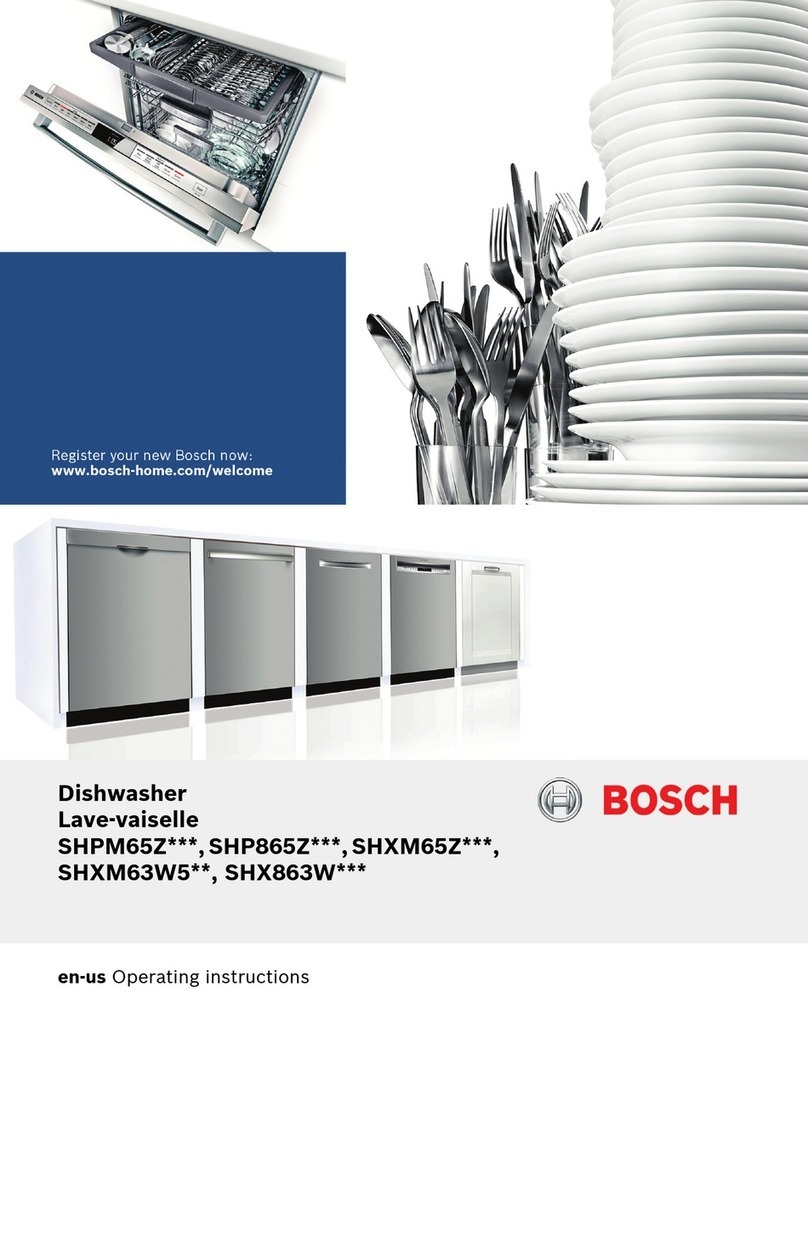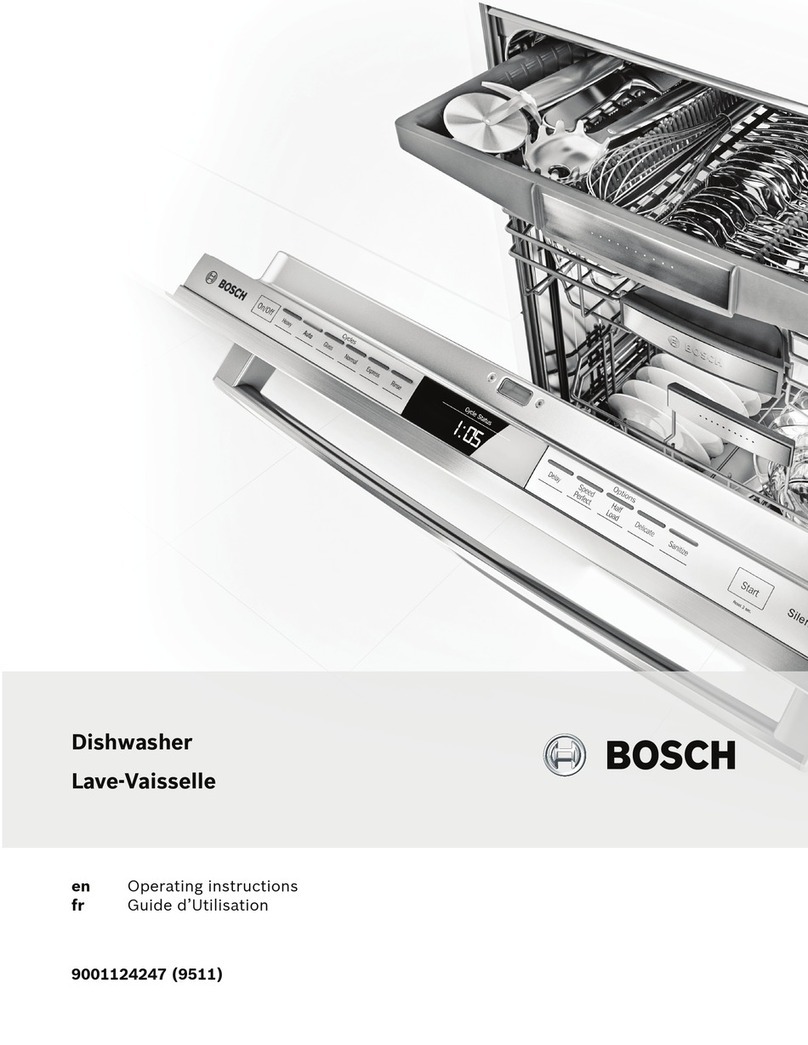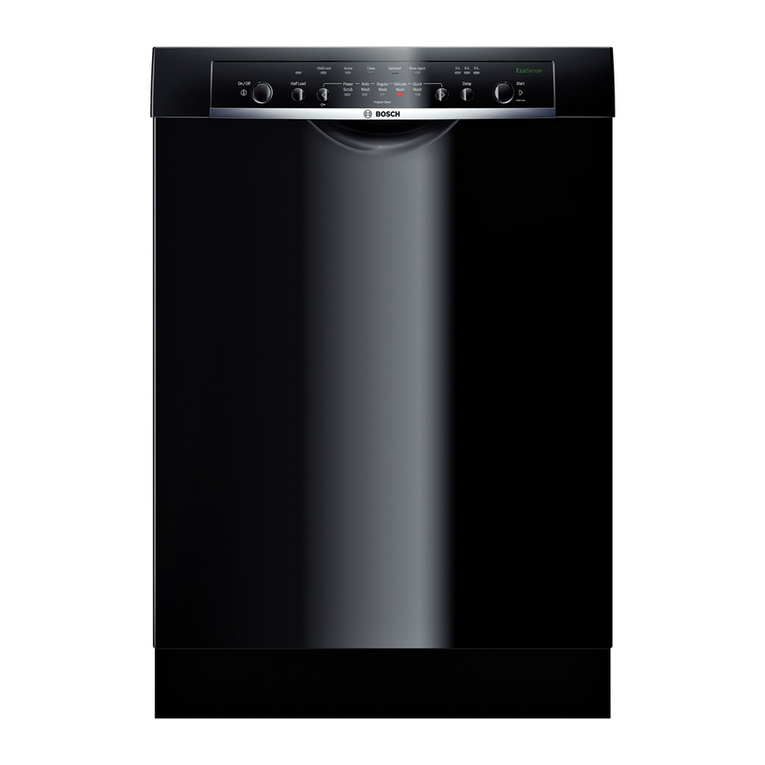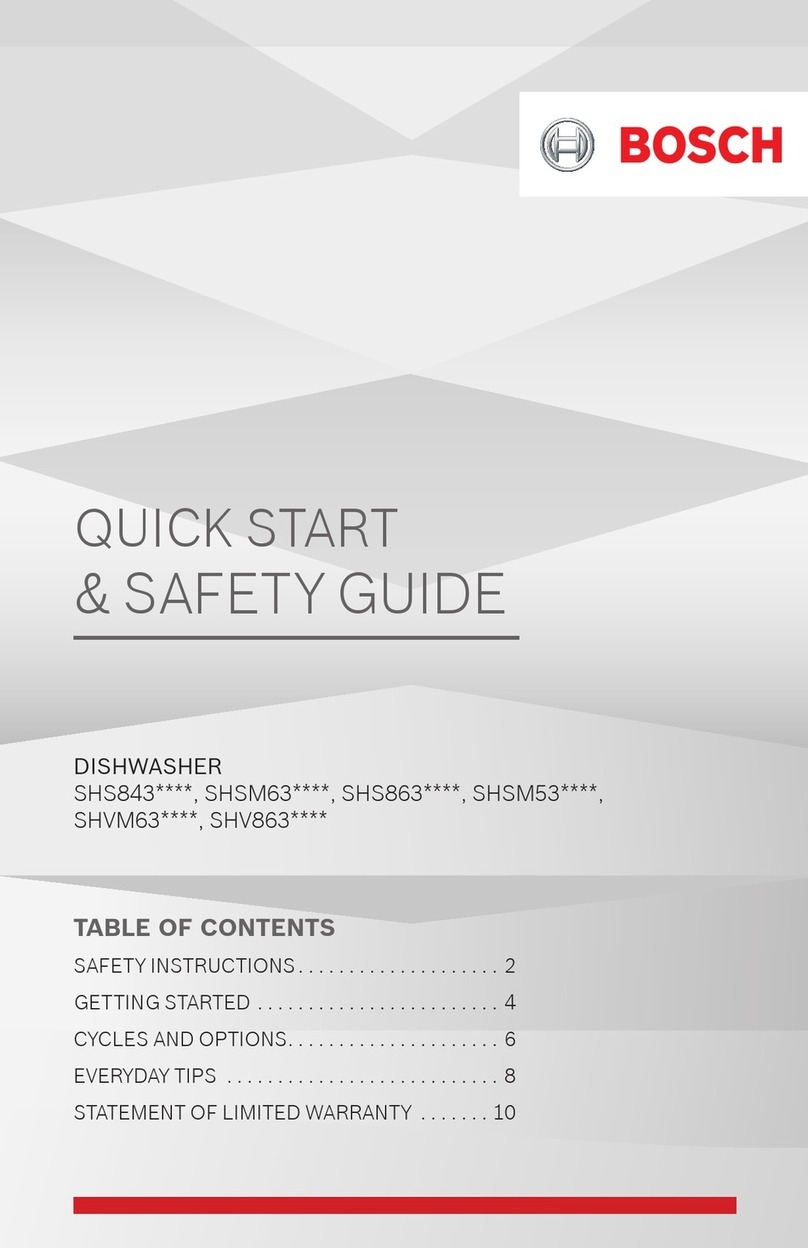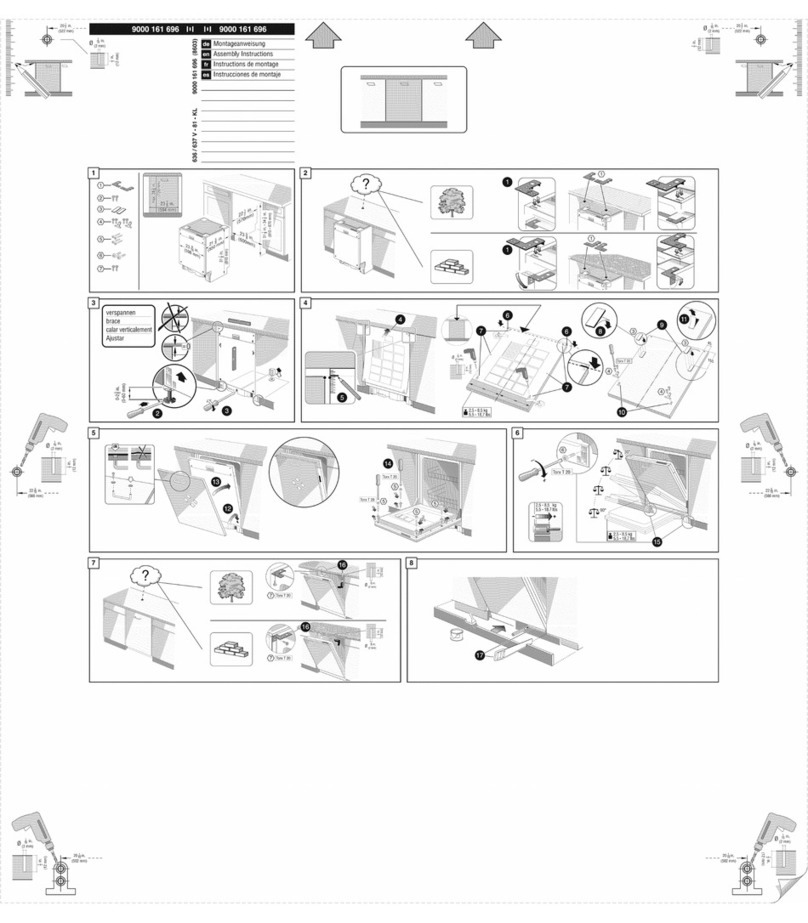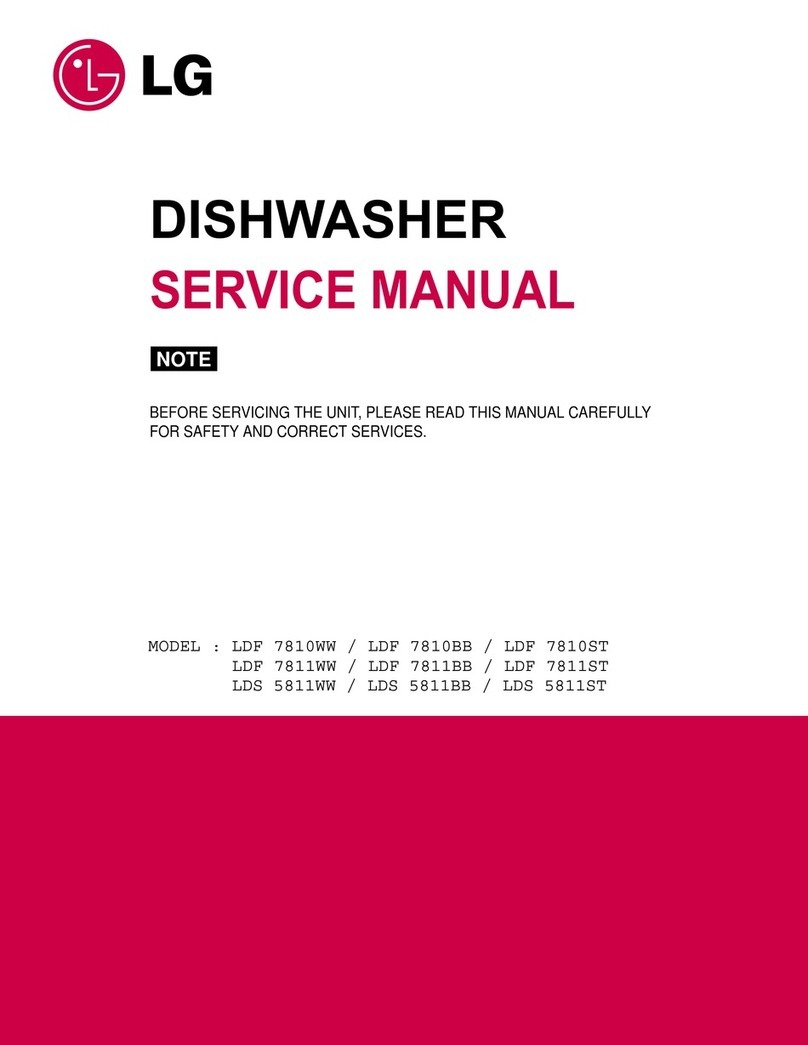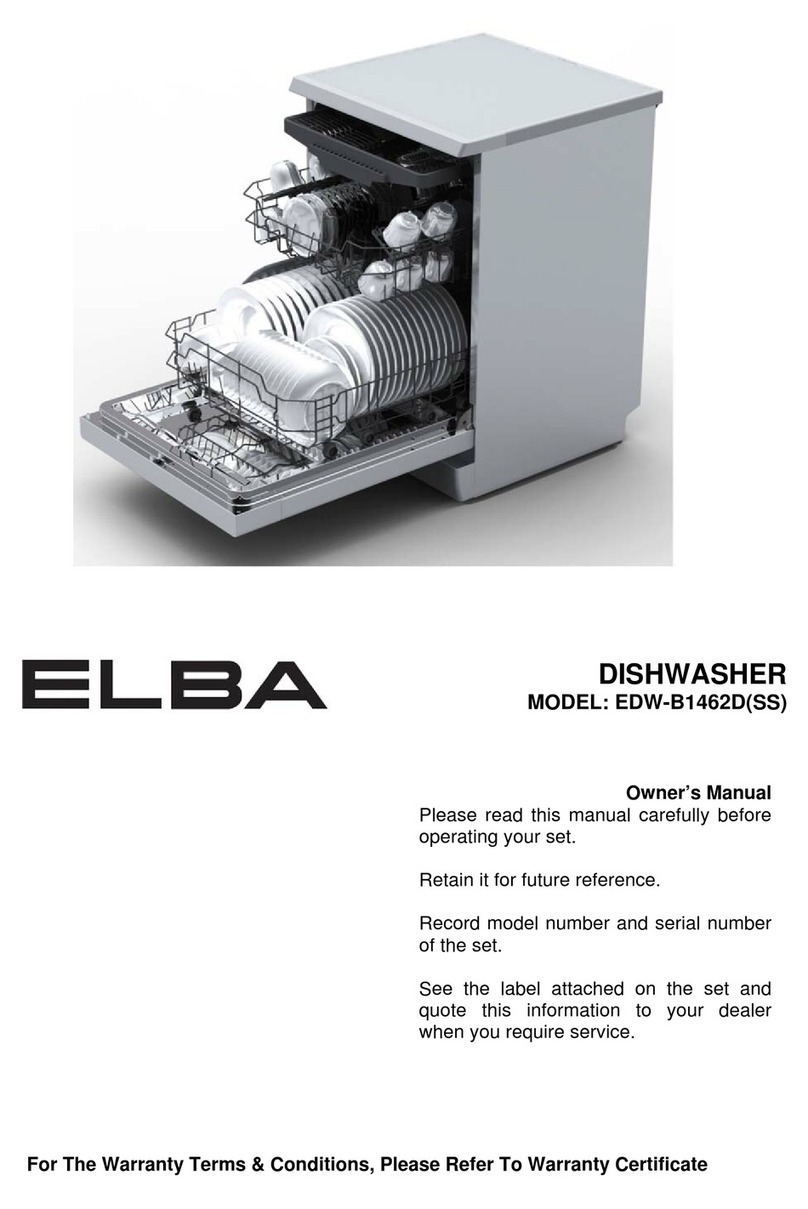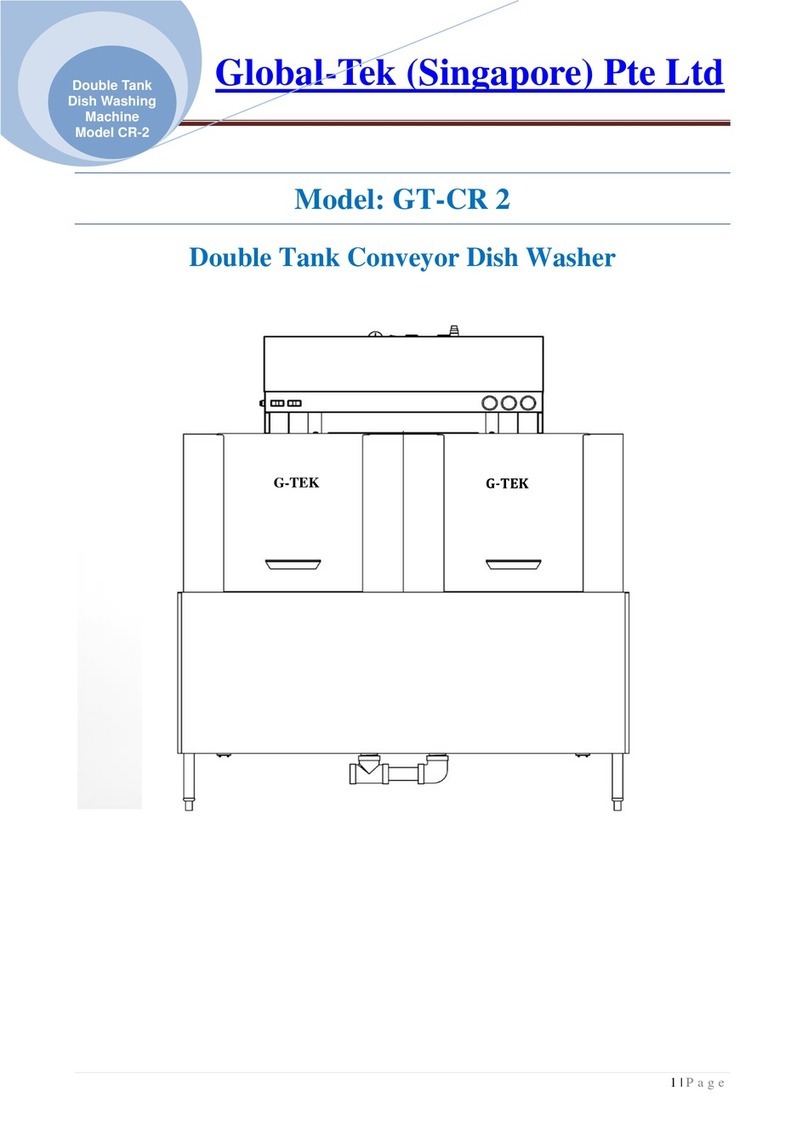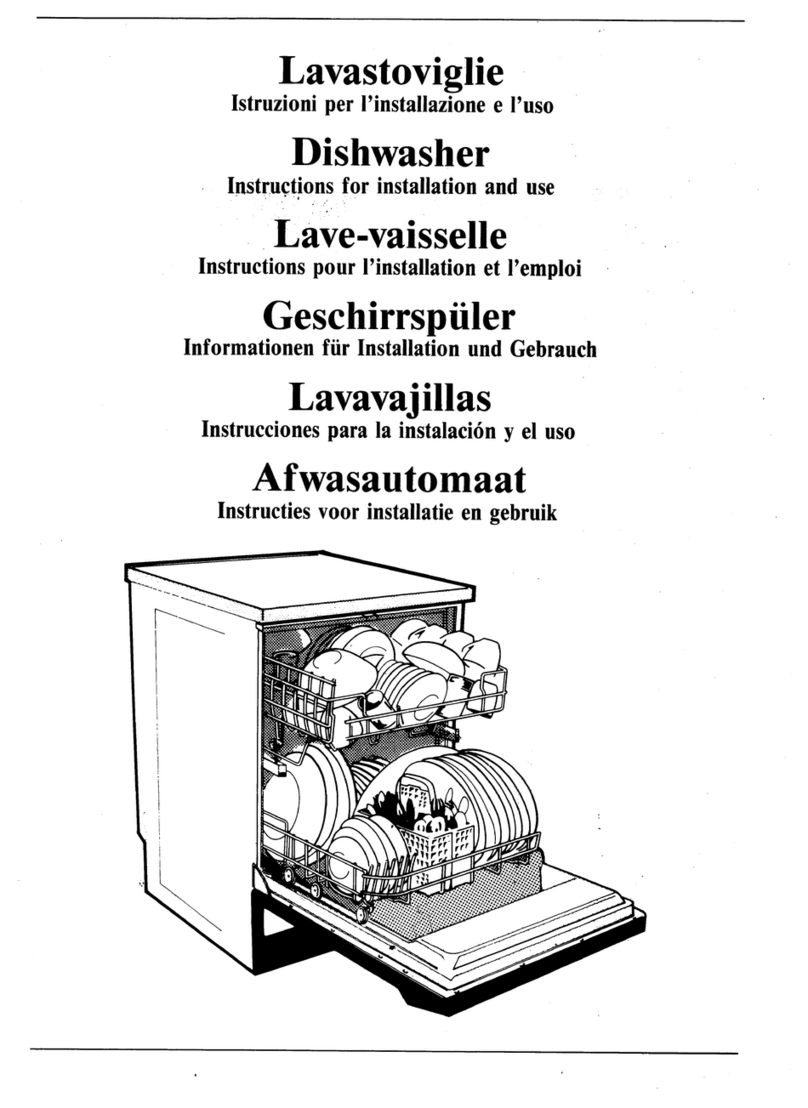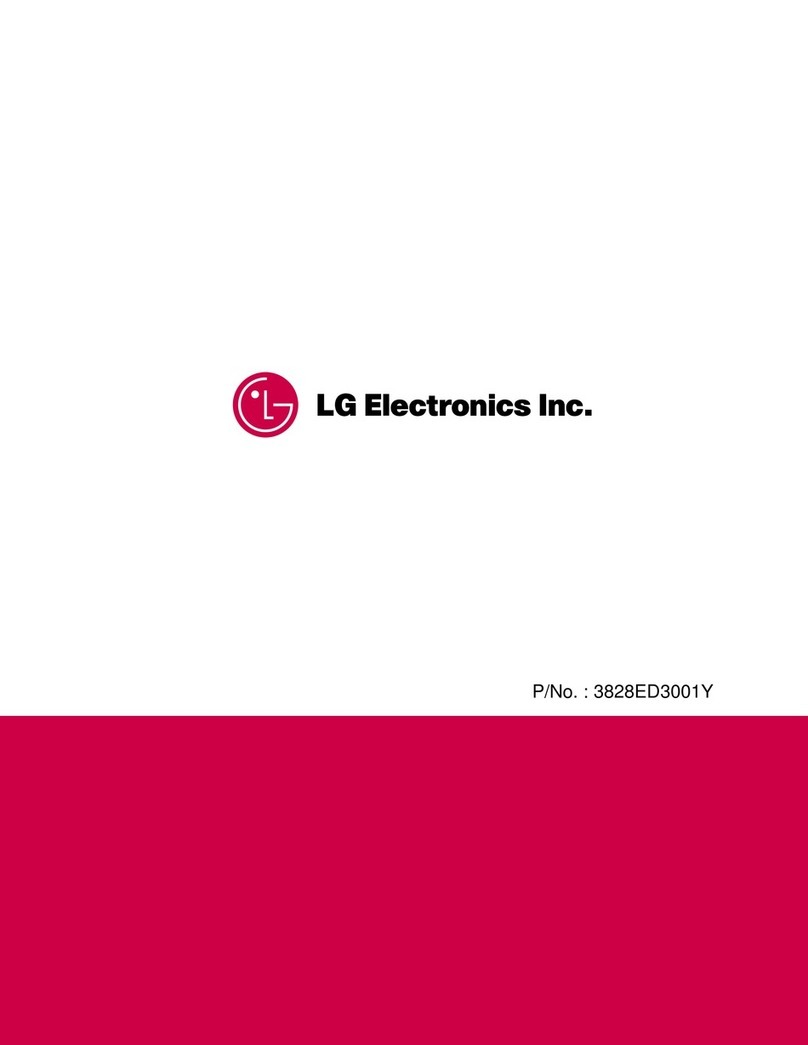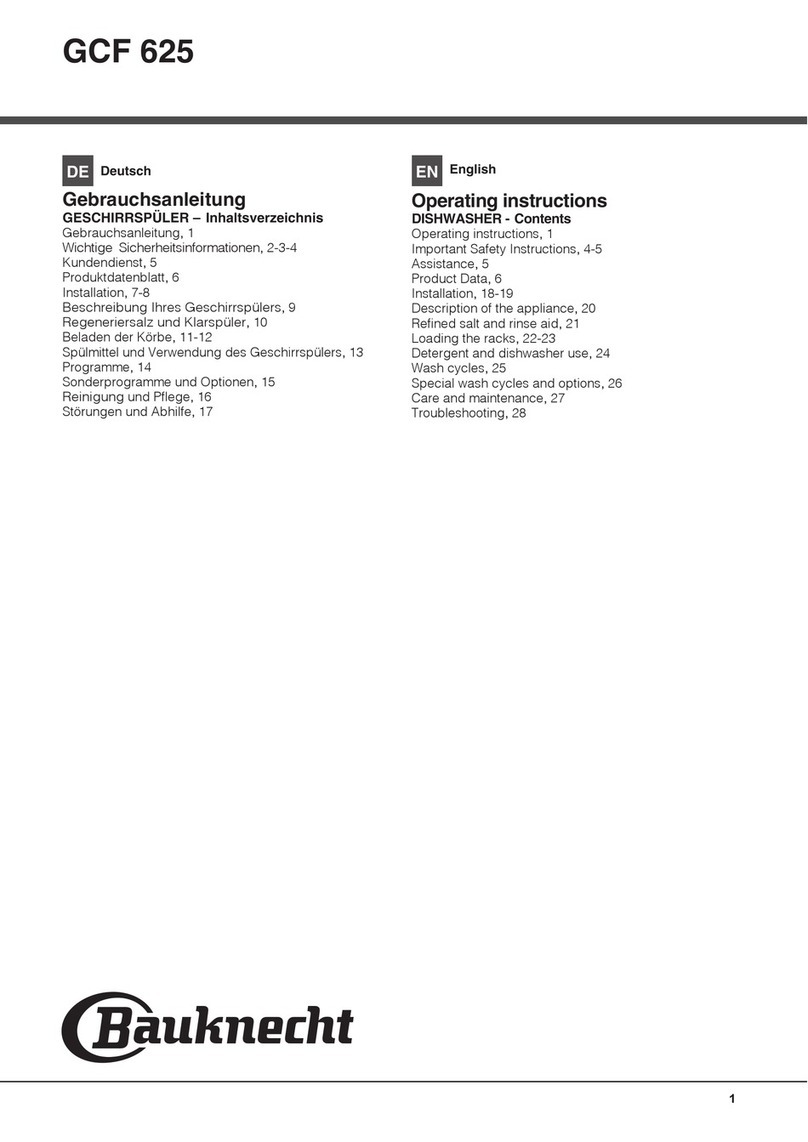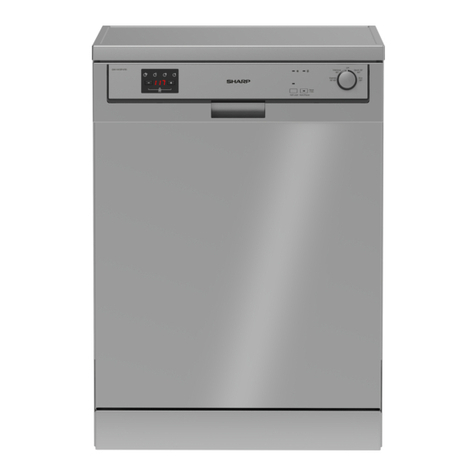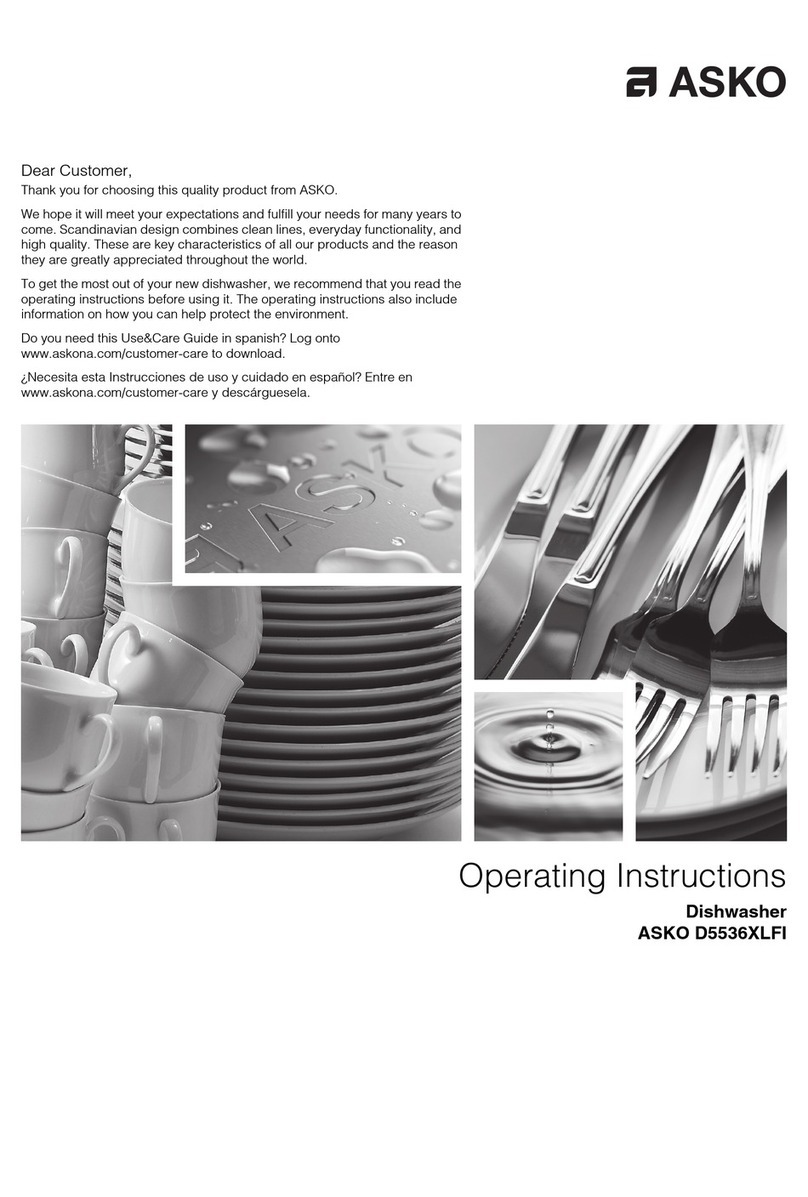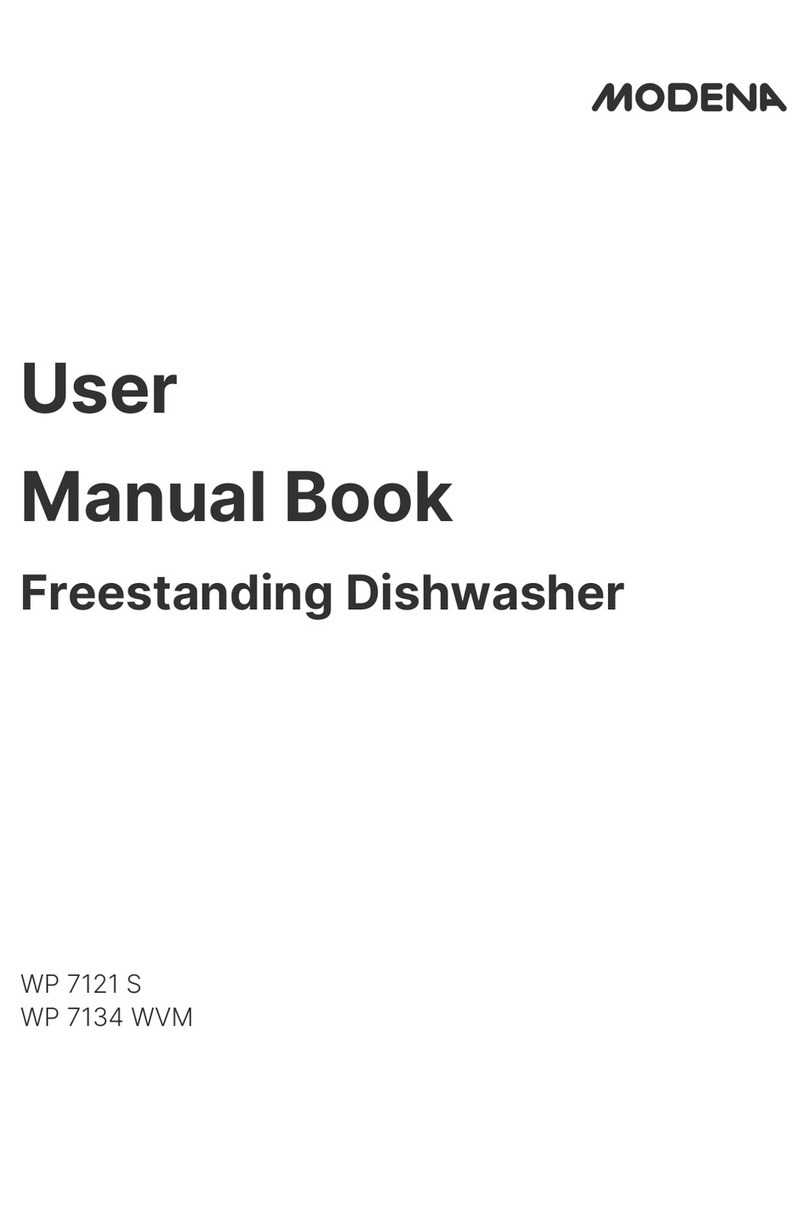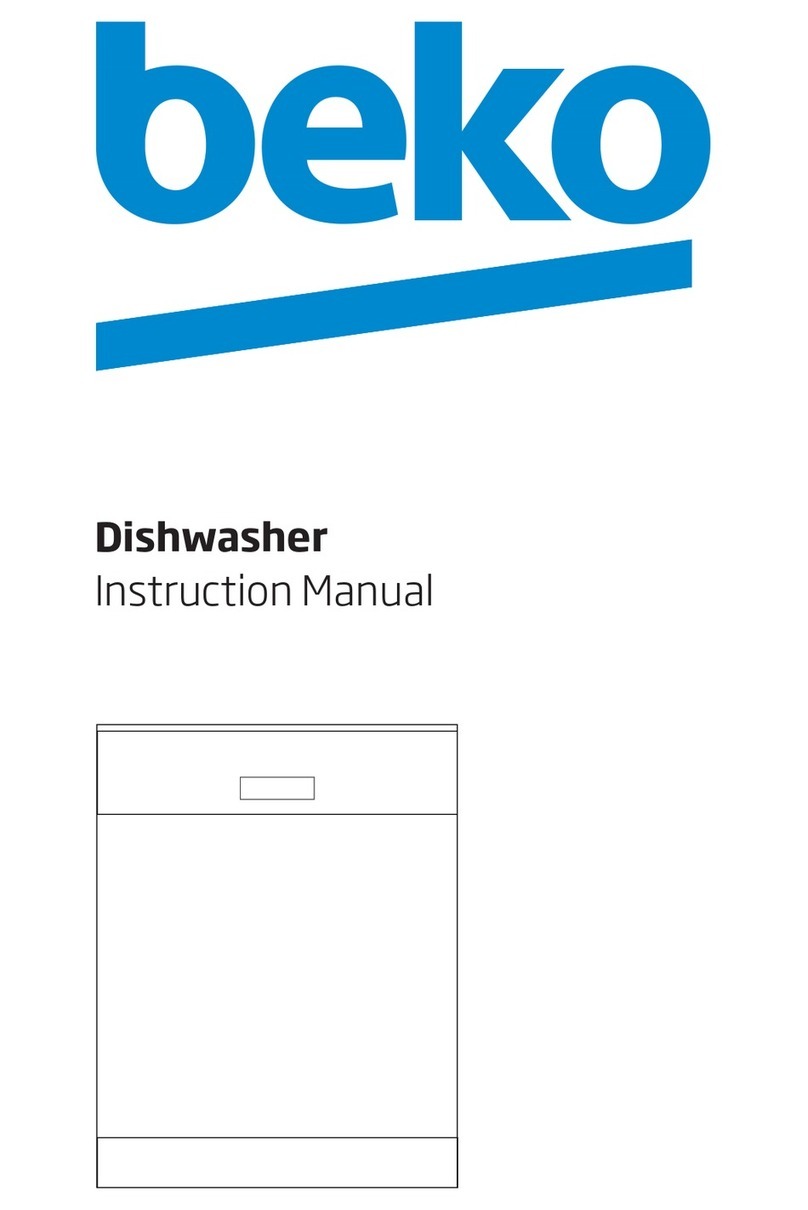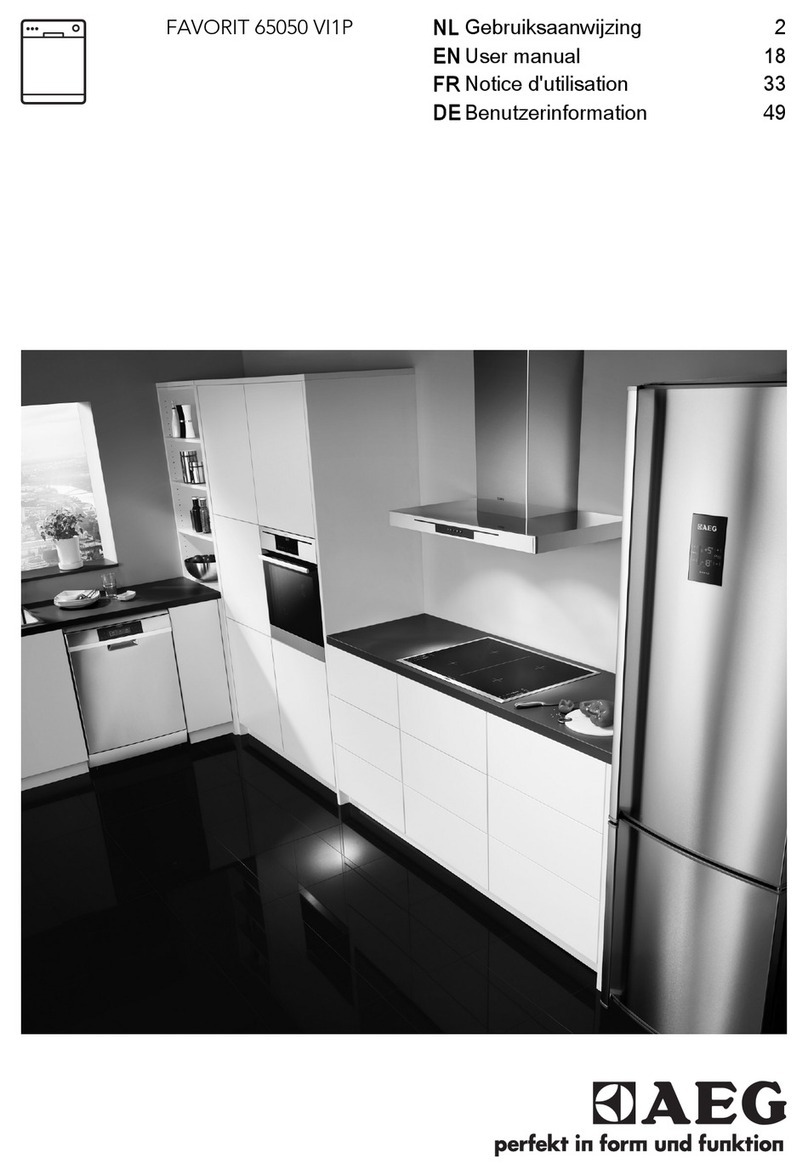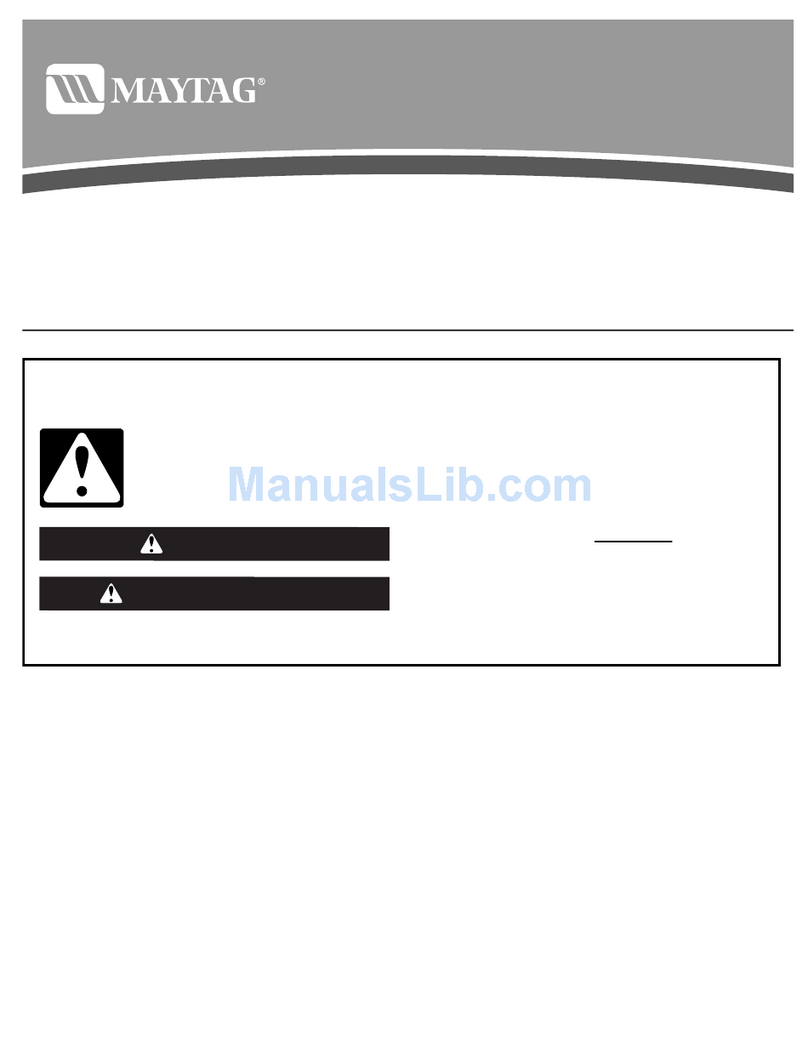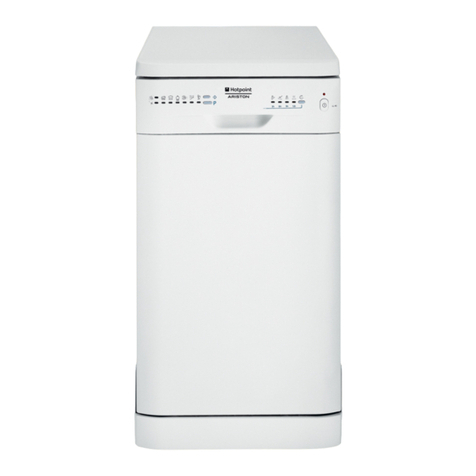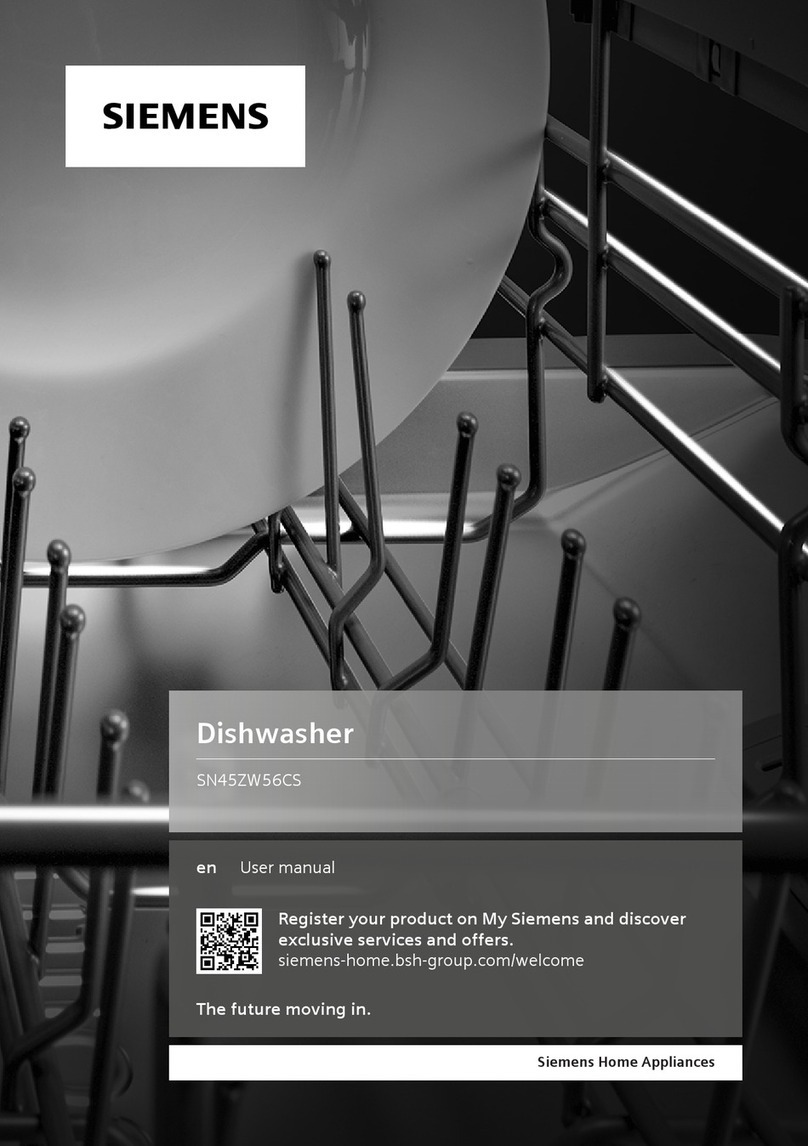
NL
Table of contents
Safety.................................................. 4 Folding plate supports .......... 26
Extra Clean Zone .................. 26
Cutlery basket heights ......................... 27
General instructions .................. 4
Destination of the device.................. 4
Restriction of users ............ 4
Safe installation.................................. 5
Safe use.................................................. 7
Damaged device .................. 9
Dangers to children..................... 9
Before first use .................. 28
First time use..... 28
Softening System .................. 28
Overview of the water hardness
settings................................ 28
Avoiding material damage .......... 12
Safe installation.................................. 12
Safe use.................................. 12
Setting water softening.................. 29
Softening salt ............................. 29
Switching off water softening.......... 30
Environmental protection and
saving................................................... .... 13
Softening system regenerative
run .................................................. 30
Disposing of the packaging .......... 13
Saving energy ................................ 13 Rinse System ................................ 31
Drying with zeolite . . . . . . . . . . . . . . . . . . . 13
Aqua sensor .................................. 14
Sensors .................................. 14
Rinse aid ......................... 31
Setting the rinse aid
amount ................................................ 31
Switch off rinse system... 32
Setting up and connecting ................ 14 Detergent .................................. 32
Scope of delivery .................................. 14 Suitable detergents .......... 32
Unsuitable dishwashing detergent .................. 34
Setting up and connecting the
device................................................... ....... 15
Waste water connection ................... 15
Drinking water connection .................. 15
Electrical connection .................. 16
Notes on
detergents................................................................... .. 34
Filling detergent ................................ 34
Crockery.................................. 35
Getting to know your device.................. 17 Damage to glass and crockery
good ................................................ 36
Device ................................................. 17
Controls..................... 18 Loading crockery .................. 36
Unloading crockery ................... 37
Programs .................................. 21
Notes for test institutes ..... 22
Favorite . . . . . . . . . . . . . . . . . . . . . . . . . . . . . . . . . . . . . . 23
The Ministry in essence................ 37
Opening the appliance door .................. 37
Switching on the appliance .................. 37
Set program .................. 38
Set additional function .................. 38
Making time setting................................ 38
Start program .................. 38
Interrupt program .................. 39
Additional Features ................................ 23
Equipment.................................. 24
Upper basket ......................... 24
Lower basket ......................... 25
Cutlery drawer................................. 25
Etagère .................................. 25
2


